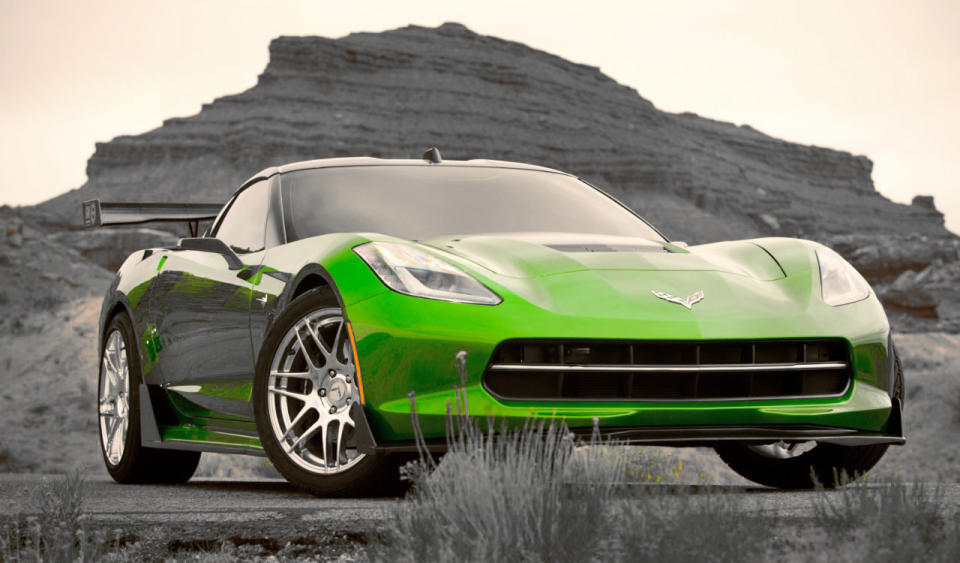‘Corvette E-Ray’ Trademarked By Chevy, Hinting At Electric Vettes

Automakers often file trademarks for names that they consider but never use. And such may be the case with one General Motors sought to reserve last week for use in vehicles: “Corvette E-Ray.” But the name suggests someone at GM has been thinking about blending electric power with Chevy’s iconic sports car—and there’s only a couple of ways that GM could do such a thing without messing with what makes the Corvette great.
As first reported by AutoGuide, GM’s applications with the U.S. Patent and Trademark Office for “Corvette E-Ray” and plain “E-Ray” specify them for use on vehicles, rather than on toys or T-shirts. There’s no other useful detail on the filings aside from timing; with both the Detroit auto show and the Consumer Electronics Show in a few weeks, this would be about as close as GM could get to those dates and legally reserve the names.
I admit up front I have no inside intel on whether Corvette chief engineer Tadge Juechter and team have something brewing. But it’s easy to speculate on the choices they have available for electrifying the Vette, and one makes far more sense than any other.
Firstly: A mild hybrid Corvette that offered a small boost in fuel economy wouldn’t be worth either the engineering costs for Chevy nor the reputation hit among Vette fans—and the 2016 model already gets 29 mpg on the highway. Corvette’s other sub-brands (Z06/Z07, ZR1) bring massive performance to bear; if Chevy’s going to add another one for electrification, it’s going to have to be impressive.
An all-electric Corvette would certainly grab the spotlight. GM has extensive lithium-ion battery resources from the Volt/Bolt projects to design a pack and motors, and with the right settings a Vette EV could compete with the 2.8-second 0-to-60 mph times that Tesla pulls from its P85D in “Ludicrous” mode.
But the engineering redesign necessary to make the Vette all electric would go against the car’s ethos of affordable performance. Because the Vette is built in such low volumes, an electric-only variant would likely cost more than $100,000 at retail. It would have some straight-line advantages over other models, but suffer in handling and range. And it’s questionable whether Chevy would be able to lure buyers who otherwise wouldn’t consider a Vette to the fold with a pure EV.
The more likely possibility for a “E-Ray?” A performance hybrid Vette in the vein of the Acura NSX or Porsche 918 supercar. Those cars use electric motors to power the front axle from a battery pack that’s smaller than what’s needed for a pure EV. Chevy could do the same, giving the Vette an all-wheel-drive setup that delivers maximum torque for launches, but without the weight penalty of a full electric system. Such a setup would also require far less modification to the basic chassis, and work much like the hybrid energy units in modern F1 and Le Mans race cars.
And remember: the Vette relies on GM’s volume engine business for its existence. A custom full-electric setup would have little application elsewhere in GM’s lineup, but electric front-wheel-drive could make sense in GM’s pickup and SUV models as a fuel-saving measure in the not-too-distant future.
There’s a good chance GM trademarked the name as a backstop, and after today we will never hear it again. It’s also possible that Vette engineers will soon appear onstage with a car that has a plug but no gas cap. But my bet would be that a Corvette E-Ray was meant to do what Vettes do best: embarrass cars costing twice as much. If it doesn’t exist, maybe it should.

 Yahoo Autos
Yahoo Autos 